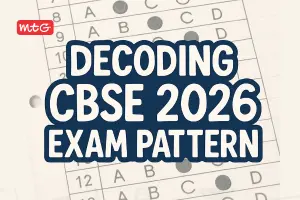
NCERT class 7 mathematics chapter 2 – “Fractions and Decimals” teaches us two fractions are multiplied by multiplying their numerators and denominators separately. For the CBSE exams, practice multiple-choice questions (MCQs) to prepare for the objective questions. We have provided Class 7 MCQ Questions on “Fractions and Decimals” paired with comprehensive explanations. CBSE is emphasizing the role of MCQs as they assist in understanding the concepts completely.
As compared to subjective questions, MCQs are very different so practicing and understanding how to get appropriate answers in MCQs is very essential. To revise the main concepts, students should practice all the MCQs with the answers given. This will also help them familiarize themselves with the kinds of questions that might appear in the board exams.
Previous – Integers Class 7 MCQS With Answers
Important – CBSE Class 7 Syllabus For 2024-25 Session
You will also like – Class 7 Math MCQ Question with Answers
Topics covered in “Fractions and Decimals”
- Multiplication of Fractions
- Multiplication of a Fraction by a Whole Number
- Multiplication of a Fraction by a Fraction
- Division of Fractions
- Division of Whole Number by a Fraction
- Division of a Fraction by a Whole Number
- Division of a Fraction by Another Fraction
- Multiplication of Decimal Numbers
- Multiplication of Decimal Numbers by 10, 100 and 1000
- Division of Decimal Numbers
- Division by 10, 100 and 1000
- Division of a Decimal Number by a Whole Number
- Division of a Decimal Number by another Decimal Number
CBSE Class 7 Mathematics Fractions and Decimals MCQs – PDF Download
Answers –
Summary for NCERT class 7 mathematics chapter 2 – “Fractions and Decimals”
- Two fractions are multiplied by multiplying their numerators and denominators separately and writing the product as (product of numerators)/ (product of denominators).
- A fraction acts as an operator ‘of.
- The product of two proper fractions is less than each of the fractions that are multiplied.
- The product of a proper and an improper fraction is less than the improper fraction and greater than the proper fraction.
- The product of two improper fractions is greater than the two fractions.
- A reciprocal of a fraction is obtained by inverting it upside down.
- While dividing a whole number by a fraction, we multiply the whole number with the reciprocal of that fraction.
- While dividing a fraction by a whole number we multiply the fraction by the reciprocal of the whole number.
- While dividing one fraction by another fraction, we multiply the first fraction by the reciprocal of the other.
- While multiplying two decimal numbers, first multiply them as whole numbers. Count the number of digits to the right of the decimal point in both the decimal numbers. Add the number of digits counted. Put the decimal point in the product by counting the digits from its rightmost place. The count should be the sum obtained earlier.
- To multiply a decimal number by 10, 100 or 1000, we move the decimal point in the number to the right by as many places as there are zeros over 1.
- To divide a decimal number by a whole number, we first divide them as whole numbers. Then place the decimal point in the quotient as in the decimal number.
- To divide a decimal number by 10, 100 or 1000, shift the digits in the decimal number to the left by as many places as there are zeros over 1, to get the quotient.
- While dividing two decimal numbers, first shift the decimal point to the right by equal number of places in both, to convert the divisor to a whole number. Then divide.






























